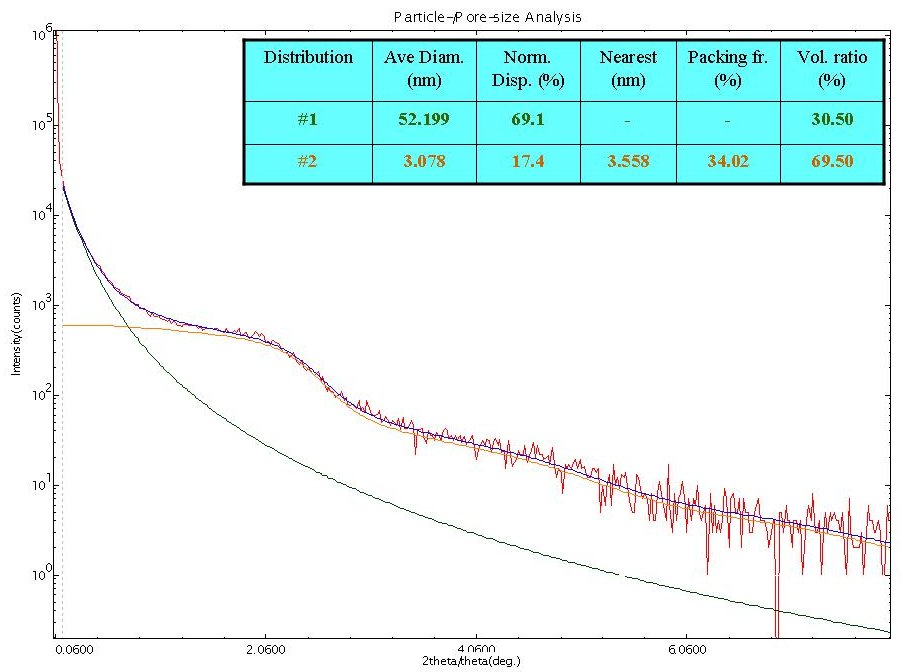Background
Small angle X-ray scattering, or SAXS, is a nondestructive technique that provides fast measurement of nanoparticle size distributions. The SmartLab multipurpose diffractometer, benefiting from its precise optics design and automated alignment procedures, makes SAXS measurement an easy task which requires almost no previous SAXS experience; hence the best choice for materials science research and development.
Investigation
In the figure below, a SAXS curve measured from porous silica nanoparticles is displayed. The measurement was done automatically - from optics alignment to sample alignment and to data collection. The sample is known made of silica nanoparticles that are porous; namely, the nanoparticles contains nanopores. In order to extract information of both the nanoparticle size distribution and the nanopore size distribution, we have considered two distinct sizes in our model. The simulation to the measured curve was done with NanoSolver software which conducts a least-square fitting process. The simulated curve is shown in the same figure below along with the measured one. In addition, the effects of the two distinct distributions are also displayed, along with a residual curve - the difference between the measured and simulated curves. Clearly, the agreement between the two curves is excellent.

From the fitting results, we learned that the silica particles have an average size of about 52 nm and a relatively wide size distribution. The pores, on the other hand, are much smaller, about 3 nm in diameter and are quite uniform. The volume fraction of the pores, as a measure of the porosity, is about 30%.
